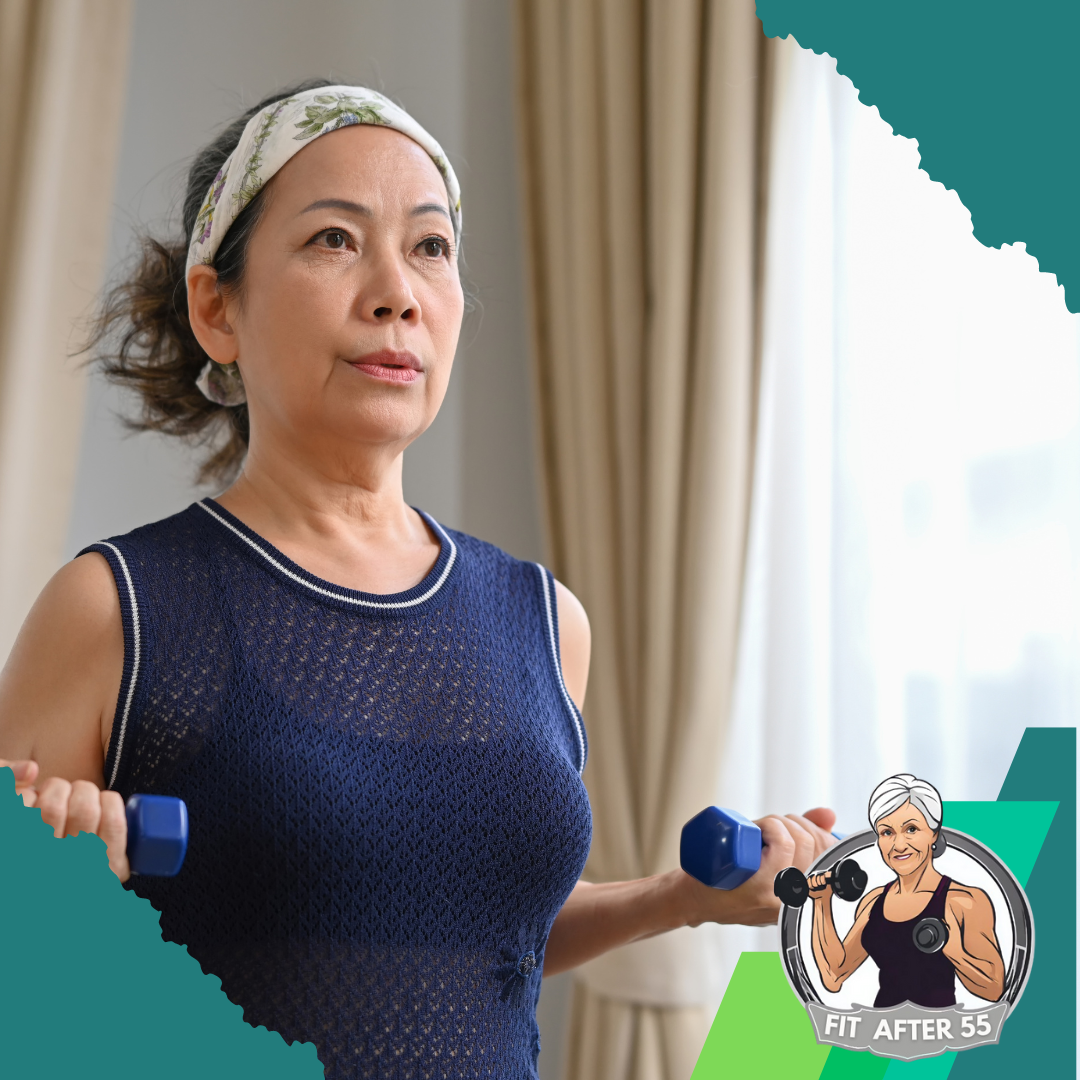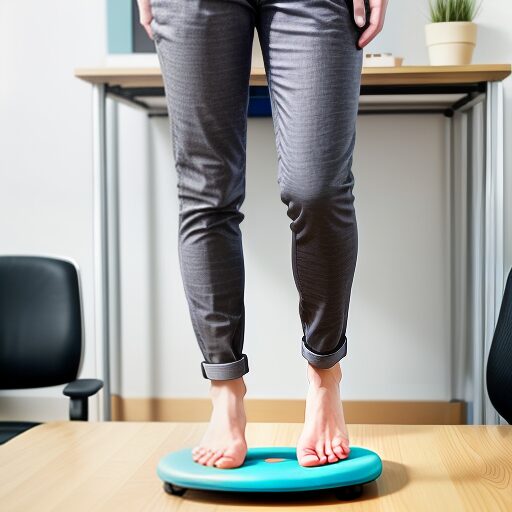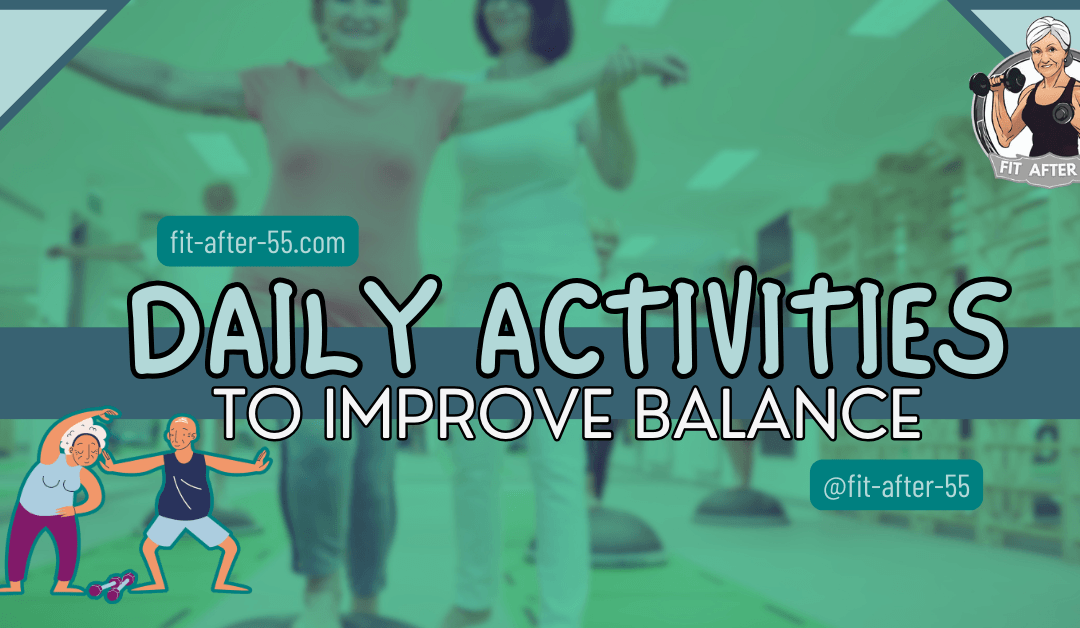I’m going to kick things off by discussing why balance is essential for your everyday well-being. It’s not just about performing well in sports or avoiding trips and falls, although those are significant benefits. Good balance is a foundational element of overall health. It affects everything from the way you walk to your ability to concentrate.
You’re going to find out that incorporating balance exercises into your daily routine can lead to injury prevention, improved coordination, and an overall better quality of life. And guess what? They are relatively simple to integrate and can be quite enjoyable.
Daily Activities to Improve Balance: Weaving Stability into Your Everyday Life
This isn’t just about doing isolated exercises at the gym, it’s about weaving balance activities into the very fabric of your daily life. Whether you’re brushing your teeth, standing in line at the grocery store, or taking a conference call, there’s always an opportunity to challenge and improve your stability.

In my opinion, the beauty of balance exercises lies in their versatility. They require minimal equipment and time investment, making them ideal for even the busiest of schedules. Plus, I’ll be showing you how they can be adapted for any age or fitness level.
So, as we move forward, I plan to break down the nitty-gritty of balance exercises in the next section. Understanding the basics will be key to successfully integrating these exercises into your daily activities without a hitch.

Key Takeaways:
- Seamlessly integrate balance exercises into daily activities for improved stability and coordination.
- Tailored suggestions for home, office, and seniors emphasize safety, simplicity, and consistency.
- Community support and tracking progress enhance motivation and accountability in maintaining a balanced lifestyle.

Understanding Balance Exercise Basics
When we talk about maintaining physical health, we often emphasize strength and cardio, but let’s not forget the quiet achiever: balance. Balance exercises are specific movements designed to improve your overall stability and coordination, a kind of training that helps you stay on your feet and recover quickly from trips and slips.

Types of Balance Exercises
There are mainly two types of balance exercises to know about: static and dynamic. Static exercises involve holding a position for a certain period, like a flamingo stand where you balance on one leg. Dynamic exercises, on the other hand, include movement, like walking heel-to-toe or doing side leg raises.
Benefits of Incorporating Balance Exercises
Incorporating these exercises into your routine benefits everyone, whether you’re a seasoned athlete looking to fine-tune your performance or someone aiming to walk more confidently on icy sidewalks. Balance training also complements your strength workouts and flexibility routines, working the smaller, stabilizing muscles that often get overlooked.
Integration into Daily Life
And don’t worry too much about fitting balance exercises into your busy day. I’m going to show you how to weave them seamlessly into your daily tasks, whether you’re at home or in the office. This isn’t just about setting aside time for another workout; it’s also about making smarter, more balanced choices throughout your day.
Simple Balance Activities for the Home Environment
You’re going to find out about merging balance training with everyday household chores and activities. It’s not just about doing extra workouts; it’s about making the most of your time. Here’s how you can sneak in some balance exercises without disrupting your daily routine.
Incorporating Balance Exercises into Your Daily Routine
- Static Balance Exercises:
- Find moments of stillness, such as waiting for your morning coffee to brew or brushing your teeth.
- Try balancing on one foot for 30 seconds to a minute on each leg.
- Initially, focus on safety and don’t worry about holding onto something for support.
- TV Time Balance Practice:
- Use commercial breaks as opportunities for balance training.
- Stand up and designate a spot on your carpet for heel-to-toe standing.
- Incorporate these simple exercises into your TV viewing routine to add extra balance training to your day.
Involve your family members or housemates for more dynamic and engaging exercises. Create a small obstacle course using furniture, or challenge each other to balance games like seeing who can stand on one leg the longest. These activities aren’t just beneficial for your balance; they’re a way to make fitness a fun and integral part of your home life.
Now what’s going to be really cool is if you carry these principles over to your workplace. Next, I’m going to talk about how you can incorporate balance exercises into your office routine without missing a beat in your busy schedule.
Office-Friendly Balance Enhancements
If you’re spending your days in an office setting, finding time to fit in balance exercises can seem tough. But guess what? They are absolutely doable right at your desk or during short breaks. Here’s how you’re going to integrate balance training into your workday with ease.

Desk-side Balance Exercises
| Desk-side Balance Exercises | Instructions |
|---|---|
| Standing on One Foot | While tackling emails or making phone calls, challenge your balance by standing on one foot. Switch feet every couple of minutes to give both sides of your body a mini workout without disrupting your workflow. |
| Using a Standing Desk | If you’ve embraced the standing desk trend, capitalize on it. Standing desks are excellent for improving posture and core strength, both crucial for balance. Amp it up by standing on a balance cushion or wobble board. |
| Dynamic Balance Movements | During breaks or lunch hours, engage in dynamic balance movements. Perform simple actions like heel-to-toe walking or gentle leg lifts at the water cooler to get your blood flowing and enhance stability. It’s also a great mental reset. |
I really hope that you’re starting to see how easy it is to sprinkle balance exercises throughout your office routine. But I want to emphasize one thing: safety first. Always make sure you’re in a safe setting where you can grab onto something stable if you need to.
Moving right along, let’s explore how we can keep the balance ball rolling for seniors. In the next section, I’ll be sharing some tips on how seniors can enhance their balance. This isn’t just about staying active; it’s also about maintaining independence and reducing the risk of falls. You’re going to find out about simple, safe practices tailored for older adults and how to make them a regular part of daily life.
Balance Exercises for Seniors: Staying Steady at Any Age
You might be wondering how seniors can maintain or even improve their balance as they age. I’m going to shed light on just that. Balance exercises aren’t just for the young or athletically inclined; they’re pivotal for seniors looking to preserve their independence.

Enhancing Balance and Stability for Older Adults
Balance training for older adults doesn’t need to be complicated. Here’s what it entails:
- Choose Simple Activities: Opt for activities like heel-to-toe walking or standing on one foot while holding onto a sturdy chair. The aim is to seamlessly integrate these into daily life.
- Prioritize Consistency: It’s not about elaborate routines but about consistency. Daily activities like standing on one leg while brushing teeth or sitting-to-standing exercises without using hands can greatly improve stability over time.
- Ensure Safety: Safety is paramount, especially considering the increased risk of falls. Use stable surfaces like walls or countertops for support when starting these exercises.
Incorporating balance exercises into seniors’ daily routines is crucial. Here’s why:
- Maintain Muscle Tone: Regular balance exercises help in maintaining muscle tone, preventing muscle atrophy, and promoting overall strength.
- Enhance Coordination: These activities contribute to better coordination, ensuring smoother movements and reducing the risk of trips or falls.
- Boost Confidence: By fostering better reflexes and stability, balance exercises instill confidence in seniors, enabling them to navigate daily activities with ease and assurance.
Remember, it’s never too late to start. Even those who have been sedentary can see improvements with regular practice. And your first attempt doesn’t need to be your last. You can always adjust your approach down the road.
In the next section, we’re going to explore outdoor balance exercises. Fresh air and nature can add a refreshing twist to your balance routine, and I’m here to help you discover how to safely take your balance exercises outside.
Wearable Devices for Daily Balance Improvement

Wearable devices are revolutionizing balance monitoring, offering real-time feedback on stability metrics like sway patterns and weight distribution during daily activities to improve balance. With integrated apps and affordable options, users can track progress, receive personalized guidance, and enhance their stability with ease. However, proper calibration and consultation with experts are crucial for effective use.
Wrapping Up: Integrating Balance Into Your Lifestyle
Alright, now that you’ve got a solid grasp on the various ways to incorporate balance exercises into your daily life, I’m going to let you in on a little secret: consistency is your best friend here. It’s all about making small changes that add up over time. So, don’t rush it; choose something that resonates with you, and make it a habit.

You’re probably wondering how you’ll know if all this balancing is making a difference. Good question. Tracking your progress can be quite motivating. Notice improvements in your daily activities, like how you’re walking more steadily or how carrying groceries feels easier. Maybe even keep a log – nothing fancy, just notes on your phone will do.
Now, I’m a firm believer in the power of community. Sharing your balance exercise milestones or even challenges can boost your motivation but also inspire others. Why not invite a friend to join you on a balance walk? Or maybe share your successes on a community board? It’s incredible how much we can achieve when we support each other.

In my opinion, you’re now ready to stand tall and steady, taking on everyday activities with newfound confidence. Remember, every little bit counts. Your journey towards better balance may be gradual, but the rewards – a stronger, more resilient you – are truly worth it. Thanks for sticking with me, and here’s to a balanced life!
Frequently Asked Questions
Why is balance important in daily life?
Maintaining balance is crucial for stability and coordination in various activities, reducing the risk of falls and injuries.
What are some benefits of incorporating balance exercises into daily routines?
Balance exercises can aid in injury prevention, improve coordination, and contribute to an overall better quality of life.
Can balance exercises be adapted for different ages and fitness levels?
Yes, balance exercises can be modified to suit individuals of all ages and fitness levels, making them accessible to everyone.
How can balance exercises be integrated into daily activities?
Balance exercises can be seamlessly woven into daily tasks such as brushing teeth, standing in line, or even during work breaks, requiring minimal time and equipment.
Let’s Connect: Join Our Vibrant Elderly Fitness Community!
Hey there! Ready to dive into a world of fitness tailored for those after 55? Swing by our official website at fit-after-55.com for a treasure trove of engaging content and insightful product reviews.
And hey, don’t forget to pop over to our Facebook page too! It’s not just a page; it’s a warm, caring community where you can connect with folks who share your passion for staying active and healthy as we age. Drop by at Facebook and let’s start this journey together!

